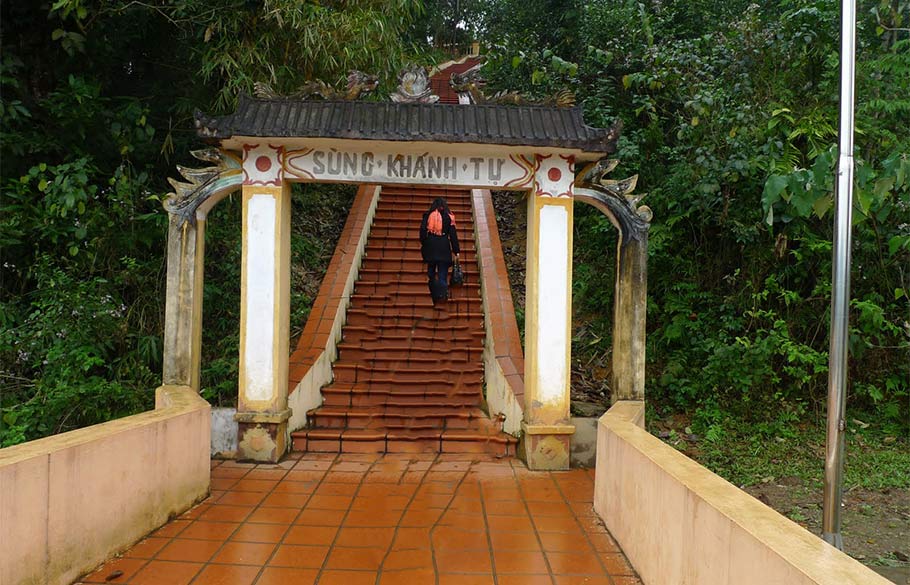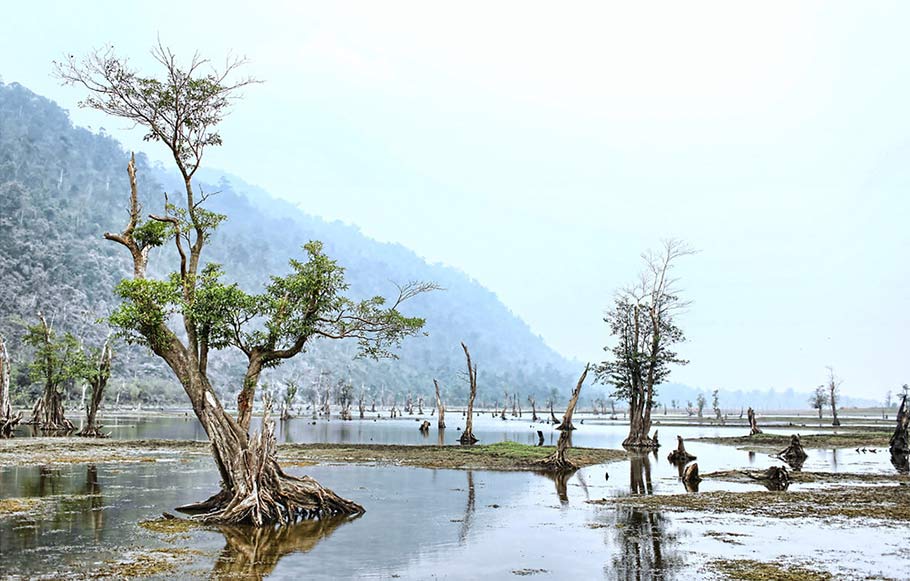The district of Vi Xuyen almost entirely envelops Ha Giang Town, and contains a wealth of gorgeous nature, unique culture and tragic history.
The capital of the district of the same name lies not far south of Ha Giang Town, but there is no real reason for travellers to spend any time here or even stop at all, as the allure of this district is all out in the countryside and not in the capital town itself.

Surrounding the town are several Pagodas, foremost among these being Sung Kranh. The pagoda is located near a Nung village and offers breath-taking panoramic views of the surrounding countryside. The structure was built in 1367, but restored as recently as 1989, when they added the staircase to better facilitate visitors to the top. Every year the Tay people celebrate Long Tong Festival here, which is a ceremony intended to ensure favourable conditions for planting in the coming season.
Another notable nearby pagoda is Nam Dau, which was recently uncovered and has presented archaeologists with some surprising finds. Namely, features thought to be unique to Thang Long Citadel in Hanoi can also be found here, such as lotus shaped tiles and a terracotta lion’s head.
On the more natural side of things, the district is also positively littered with hot springs, which have become a particular attraction among tourists. While there are several hot springs here (for example Thuong Son and Thanh Ha) the most popular one is Quang Ngan which also has a homestay located right by the springs, perfect for a day spent relaxing as a break from travelling around the loop.

For more water-based nature, you have the massive Noong Lake, which while only 20 hectares in the dry season, swells up to a staggering 80 hectares during rainy season (April-October) at which point travellers can take boat trips around the lake and even partake in some fishing with the local fishermen. The area around the lake is covered by forests and mountains and populated by various groups of the Tay, H’mong and Dao peoples.
In the far north of the district meanwhile, things take a darker turn as this area has a lot of turbulent history dating back to the Sino-Vietnamese conflict in the 1970’s and 1980’s. Indeed, during particularly intense battles of 1984 and 1987, the Chinese shelled the district with millions of artillery shells, which means that trekking to this day needs to follow carefully marked routes, to avoid any unexploded ordnances that are still lying around. Vi Xuyen withstood the brunt of the fighting during the war, which makes it the perfect place to learn more about this relatively unknown chapter of Vietnamese history.